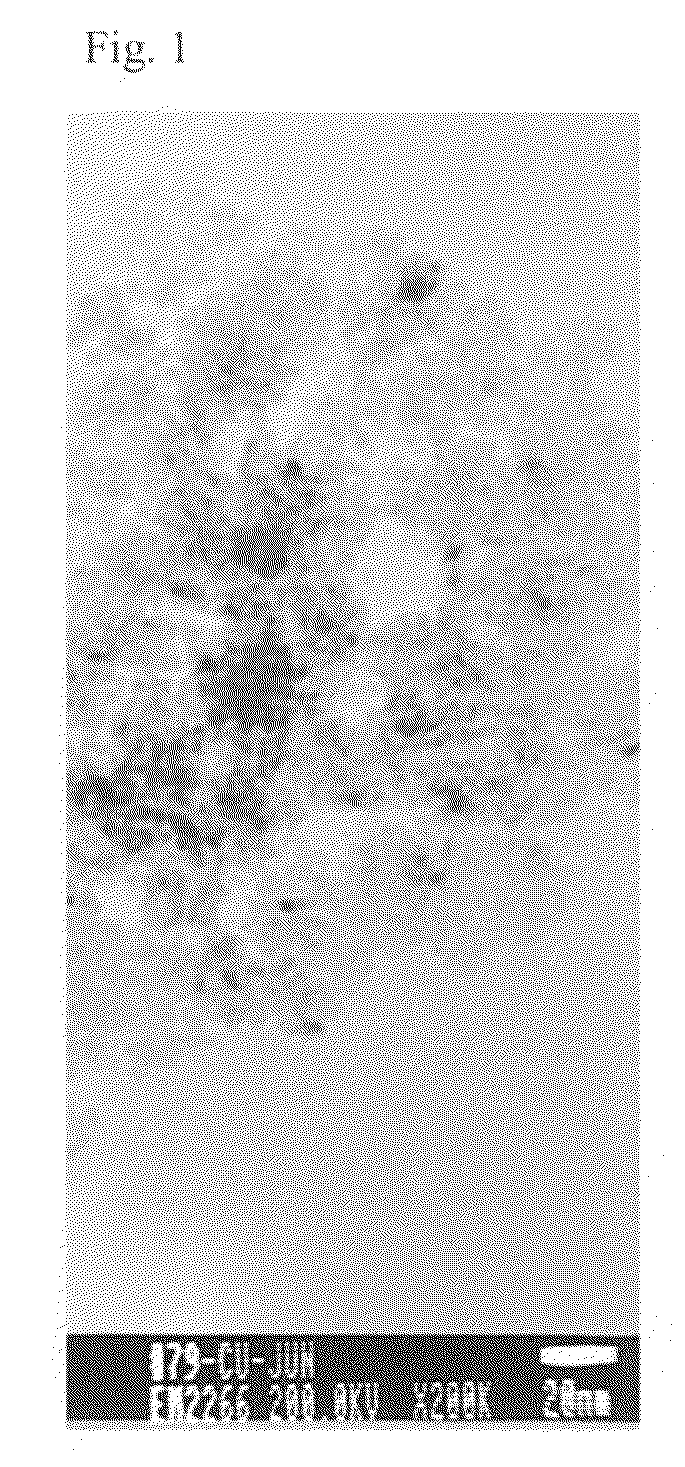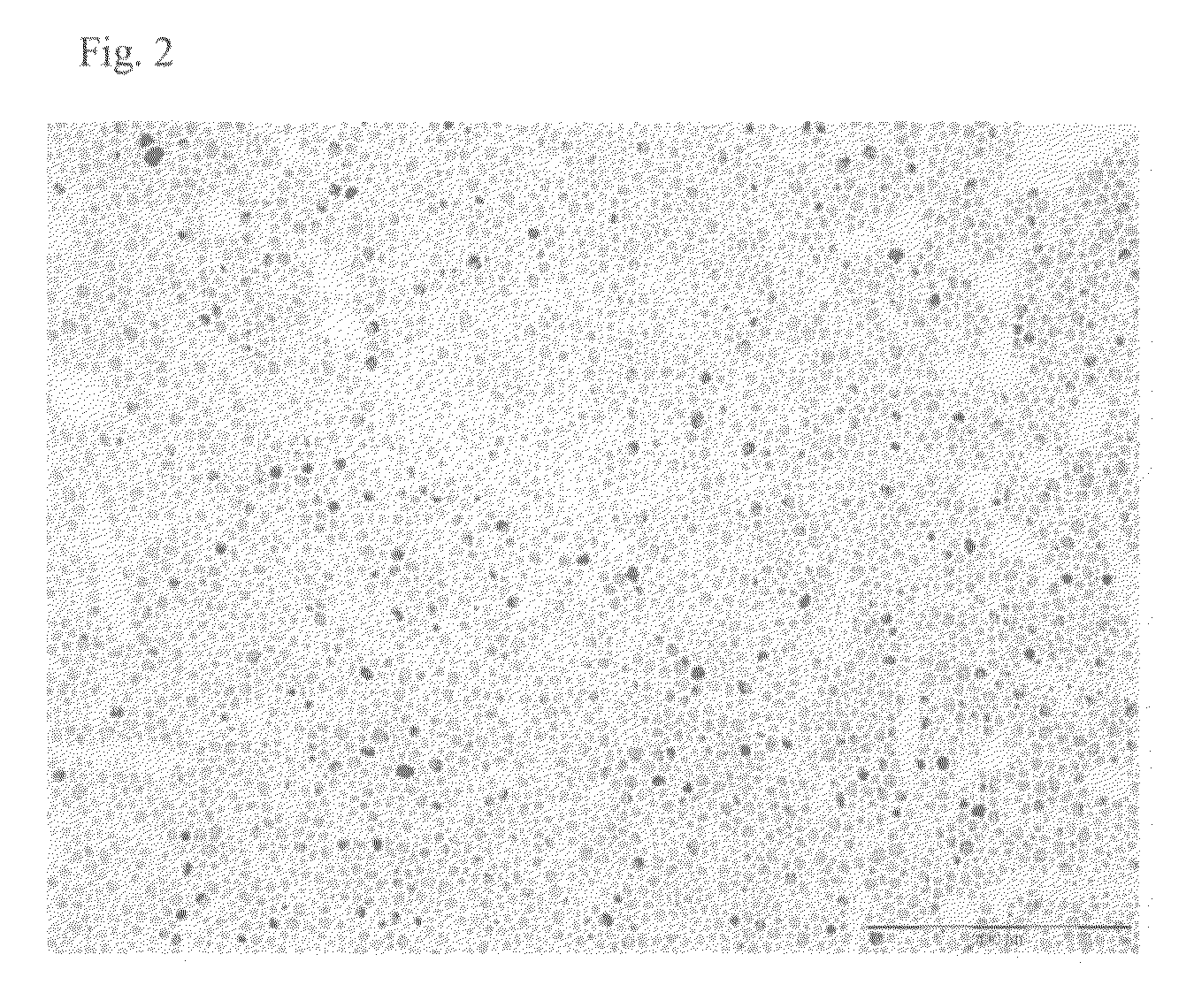Method for manufaturing copper-based nanoparticles
a technology of nanoparticles and nanoparticles, which is applied in the field of manufacturing methods for copper-based nanoparticles, can solve the problems of high production cost, difficult mass production production, and inability to control the size, shape, size distribution of particles,
- Summary
- Abstract
- Description
- Claims
- Application Information
AI Technical Summary
Benefits of technology
Problems solved by technology
Method used
Image
Examples
example 1
[0042]After CuO micropowder 1 mole was added to 1 L of toluene and 4 moles of octylamine was further added, the reaction solution was heated at 110° C. After 2 hours of the reaction, dark brown nanoparticles were washed with methanol to obtain CuO nanoparticles.
[0043]1 Moles of oleic acid and 5 moles of formic acid were added to 1 mole of the CuO nanoparticles and the reaction solution was heated to 110° C. As the temperature increases, Cu2O nanoparticles were produced, and at over 80° C. Cu nanoparticles were also produced.
[0044]The TEM image of CuO nanoparticles prepared in Example 1 was shown in FIG. 1. FIG. 1 ensures that uniform nanoparticles with a size less than 20 nm was generated.
[0045]The TEM image of Cu nanoparticles prepared in Example 1 was shown in FIG. 2. The Cu nanoparticles showed very high dispersibility.
PUM
| Property | Measurement | Unit |
|---|---|---|
| carbon numbers | aaaaa | aaaaa |
| temperature | aaaaa | aaaaa |
| temperature | aaaaa | aaaaa |
Abstract
Description
Claims
Application Information
 Login to View More
Login to View More - R&D
- Intellectual Property
- Life Sciences
- Materials
- Tech Scout
- Unparalleled Data Quality
- Higher Quality Content
- 60% Fewer Hallucinations
Browse by: Latest US Patents, China's latest patents, Technical Efficacy Thesaurus, Application Domain, Technology Topic, Popular Technical Reports.
© 2025 PatSnap. All rights reserved.Legal|Privacy policy|Modern Slavery Act Transparency Statement|Sitemap|About US| Contact US: help@patsnap.com


